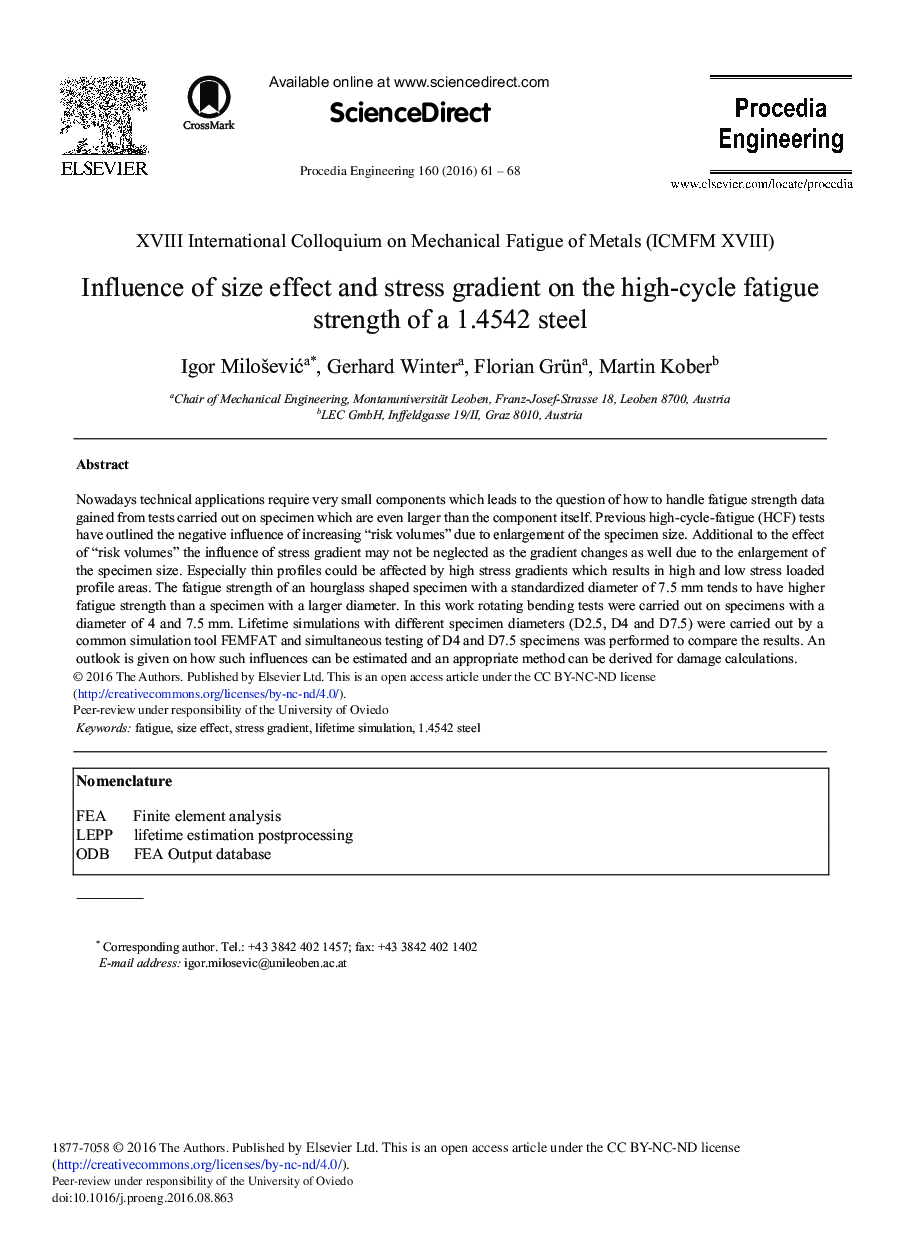| Article ID | Journal | Published Year | Pages | File Type |
|---|---|---|---|---|
| 5029413 | Procedia Engineering | 2016 | 8 Pages |
Nowadays technical applications require very small components which leads to the question of how to handle fatigue strength data gained from tests carried out on specimen which are even larger than the component itself. Previous high-cycle-fatigue (HCF) tests have outlined the negative influence of increasing “risk volumes” due to enlargement of the specimen size. Additional to the effect of “risk volumes” the influence of stress gradient may not be neglected as the gradient changes as well due to the enlargement of the specimen size. Especially thin profiles could be affected by high stress gradients which results in high and low stress loaded profile areas. The fatigue strength of an hourglass shaped specimen with a standardized diameter of 7.5Â mm tends to have higher fatigue strength than a specimen with a larger diameter. In this work rotating bending tests were carried out on specimens with a diameter of 4 and 7.5Â mm. Lifetime simulations with different specimen diameters (D2.5, D4 and D7.5) were carried out by a common simulation tool FEMFAT and simultaneous testing of D4 and D7.5 specimens was performed to compare the results. An outlook is given on how such influences can be estimated and an appropriate method can be derived for damage calculations.
